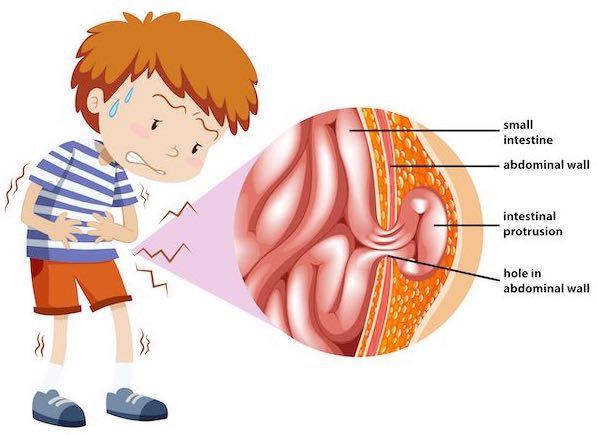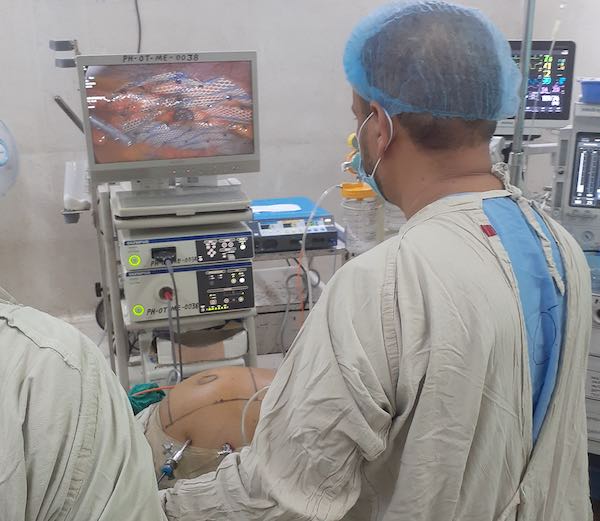Do I have a hernia?
What are symptoms and when to see a Doctor ?
Hernias are more common than many people in Nepal realize. They can affect men, women, and even children. Whether you're in Kathmandu, Lalitpur, or any other part of the country, early recognition of hernia symptoms can help prevent complications and ensure timely treatment.
In this blog, we'll explain::
- What a hernia is
- Common signs and symptoms
- Types of hernias
- When to seek a Doctor for help
- Available treatment options
What is a Hernia?
A hernia occurs when an internal part of your body, usually part of the intestine, pushes through a weak spot in the surrounding muscle or tissue wall. This can lead to a visible bulge, discomfort, or even pain.
Common Signs and Symptoms of Hernia
If you're experiencing any of the following, you might have a hernia:
- Visible bulge: A lump in your abdomen or groin area that becomes more noticeable when you stand, cough, or lift something heavy.
- Discomfort or dull ache: Especially when bending, coughing, or exercising.
- Heaviness or pressure: A sensation of heaviness in the abdomen.
- Burning or pain at the bulge site: This can be sharp or dull.
- Increased swelling by evening: Many patients notice the bulge becomes more prominent after daily work or long travel.
If the hernia becomes painful, red, or doesn’t go back in, it could be strangulated — a medical emergency that needs urgent surgery.

Fig. 1: Henia with strangulation which causes pain in abdomen
Most Common Types of Hernia in Nepal
- Inguinal Hernia: Occurs in the groin; more common in men.
- Umbilical Hernia: Seen near the belly button; often found in children and overweight adults.
- Incisional Hernia: Appears at the site of a previous surgical scar.
- Hiatal Hernia: Happens when the upper stomach pushes into the chest cavity, often causing acidity or reflux.
Similarly, other types of hernia are
- Epigastric Hernia
- Femoral Hernia
- Obturator Hernia
- Spigelian Hernia
- Diaphragmatic Hernia
When Should You See a Doctor?
You should consult a hernia specialist if:
- You notice a lump in your abdomen or groin.
- You feel pain or discomfort that gets worse with activity.
- You experience nausea, vomiting, or inability to pass gas or stool (could indicate strangulation).
- The bulge cannot be pushed back in (non-reducible hernia).
Ignoring hernia symptoms can lead to serious complications, especially in rural areas where emergency services may take time.
What are treatment options available
Depending on the type of hernia and condition of hernia your doctor will suggest you one of the following surgical treatment
- Open primary repair
- Open mesh repair
- Laparoscopic mesh repair

Fig. 1: Henia with strangulation which causes pain in abdomen
Many advanced laparoscopic hernia surgeries are now available in Kathmandu and Lalitpur and successfully treating by highly experienced Surgeon, Dr. Surendra Shah. Laparoscopic hernia repair results shorter hospital stays and quicker return to work.
Conclusion:
If you're living in Kathmandu, Lalitpur, Bhaktapur, or anywhere in Nepal and suspect you might have a hernia, don’t ignore the signs. Early consultation with a qualified hernia surgeon can save you from complications and allow for safe, minimally invasive treatment.
Remember: This article is for general information only. Follow your doctor's advice according to your personal health condition.
Consult with Dr. Surendra Shah
Are you suffering from hernia?
Consult with Dr. Surendra Shah for expert opinion and treatment of
hernia
Thanks for reading this section!
